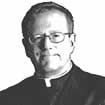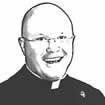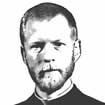
Faith

Reforming the church's daily prayer occasioned a good deal of debate on the council floor because of its implications for the life of priests.

SJ
The liturgical year and calendar
In addition to the rite of the Mass itself, the Christian articulation of time throughout the calendar year has a very strong influence on the practice of the Catholic faith. The liturgical calendar had been pruned after the Council of Trent, but the framers of the constitution judged that a number of changes were necessary to accommodate contemporary culture, especially since historical research had revealed how much of the calendar had been determined by its root in the urban liturgy of Rome, for example in the retention of the indication of which churches in the city the pope celebrated at on different days.
One of the more important emphases in the calendar reform is the renewed focus on the observance of Sunday as the primary day for the celebration of the Paschal Mystery (Christ's passion, death, and resurrection). Thus, the council fathers wished to return to the very origins of the liturgical cycle. (Sacrosanctum Concilium 102, 106) Only then did they mention the major feasts of the Christ-cycle (Easter, Christmas, Lent, and Advent, those dedicated to the Blessed Virgin Mary and to the saints and martyrs). They eliminated many of the observances that had been added over time (e.g., the Holy Wounds) but also provided for the development of individual or particular calendars belonging to nations, dioceses, or religious orders. (SC 107, 111) The observance of Lent was to be reformed so that two foci were prominent: penance and the preparation of candidates for initiation at Easter. (SC 109)
The principles enunciated in this chapter paved the way for a radical transformation of the liturgical calendar which included the elimination of the three pre-Lenten Sundays (known as Septuagesima, Sexagesima, and Quinquagesima), which were originally a local Roman observance, and of the octave which followed Pentecost Sunday (in favor of the integrity of the great 50 days of Easter culminating in Pentecost). Other changes included a renewal of Advent as both a time of eschatological (end-time) expectation and a preparation for the feasts of the Nativity, and a major pruning of the number of saints' days celebrated in the general Roman calendar. An appendix to the Constitution promoted (ecumenical) discussion with regard to possible agreement on a common and fixed date for Easter.
The Liturgy of the Hours (Divine Office)
Reforming the church's daily prayer occasioned a good deal of debate on the council floor because of its implications for the life of priests. Two major principles govern this chapter: the fact that, in the Liturgy of the Hours, Christ is praying to the Father through the church (SC 83-85) and, second, that the Divine Office is meant to "sanctify the day." (SC 88) The fathers were clearly concerned that the office be reformed in accord with the needs of modern culture, especially of those priests whose main occupation was parish ministry. Though the entirety of the daily office was still mandatory, the document prioritizes the importance of the various hours. Morning (Lauds) and Evening Prayer (Vespers) have priority of place and were to be considered the "chief hours." They are to be prayed at the times of day appropriate to them.
Matins, later named the Office of Readings, had traditionally taken place at night or at the break of day, but now it was to be adapted so that it could be prayed at any hour of the day. A morning office called "Prime," a relatively late monastic addition to the daily order of prayer, was suppressed. Finally, only one of the three shorter offices that occupied the time between Morning and Evening Prayer (terce = midmorning, sext = midday, and none = midafternoon) need be recited. The entirety of the psalter had previously been recited in the course of one week. Now, it was to be spread out over a longer period -- eventually four weeks. (SC 91) SC encouraged public and communal celebration of the Liturgy of the Hours as belonging to the entire people of God, especially the celebration of Sunday Vespers. (SC 100) Finally, provision was made for the possibility of praying the Divine Office in the vernacular. (SC 101) The post-conciliar reform attempted to promote the Liturgy of the Hours as the prayer of all God's people but ended up with a reformed prayer book for bishops, priests, and deacons.
Recent articles in the Faith & Family section
-
The Christmas crecheFather Robert M. O'Grady
-
Feeling like ChristmasJaymie Stuart Wolfe
-
Parish priests and their peopleMsgr. Frank Kelley
-
Be the carolArchbishop Richard G. Henning
-
Give a Christmas Gift to the MissionsMaureen Crowley Heil


















